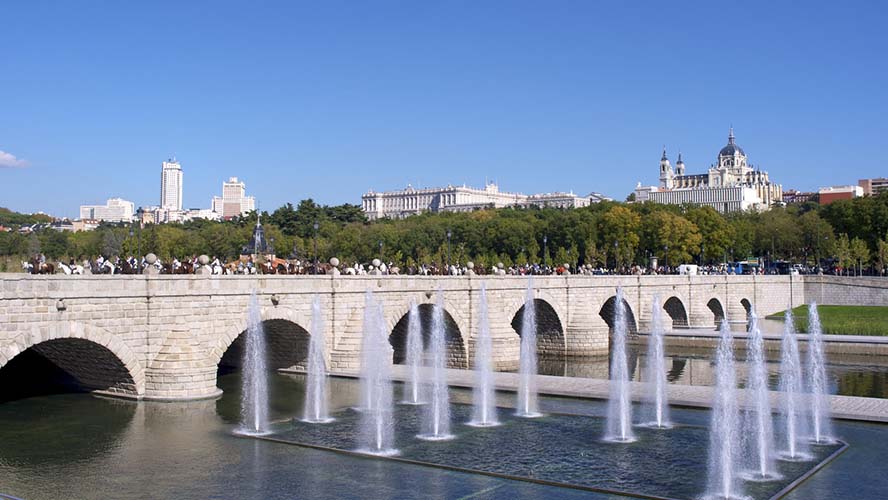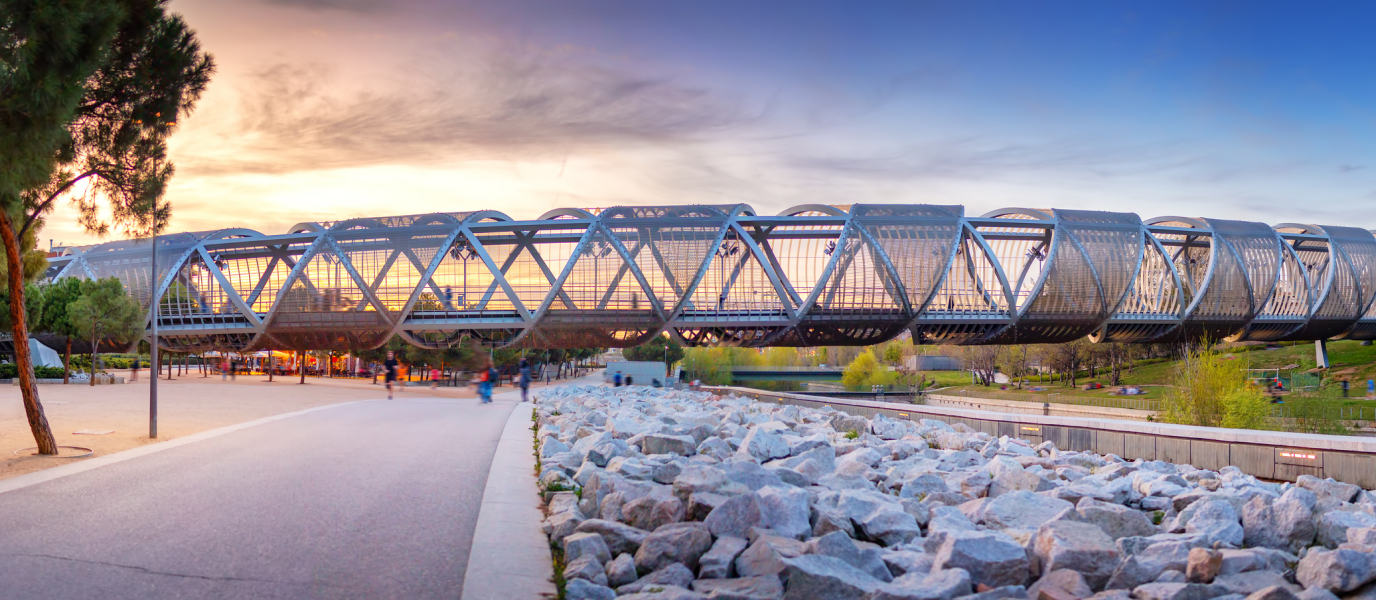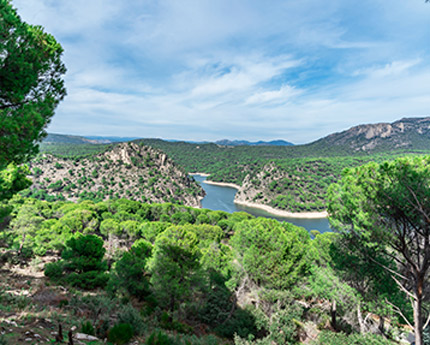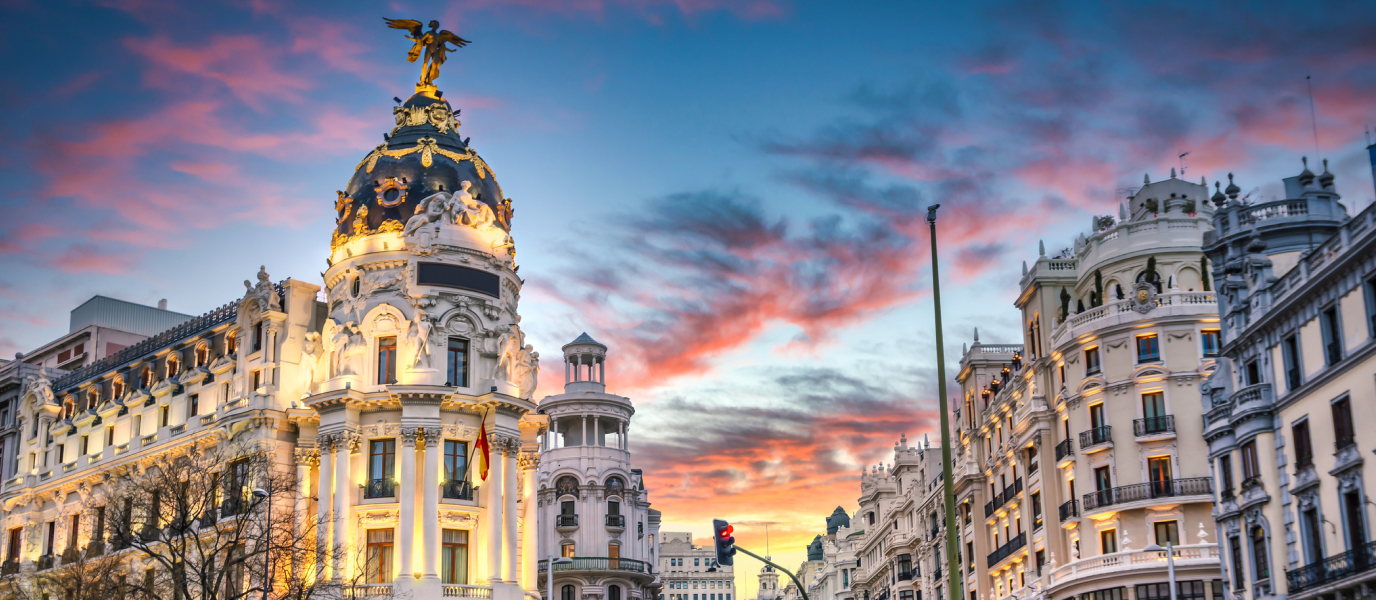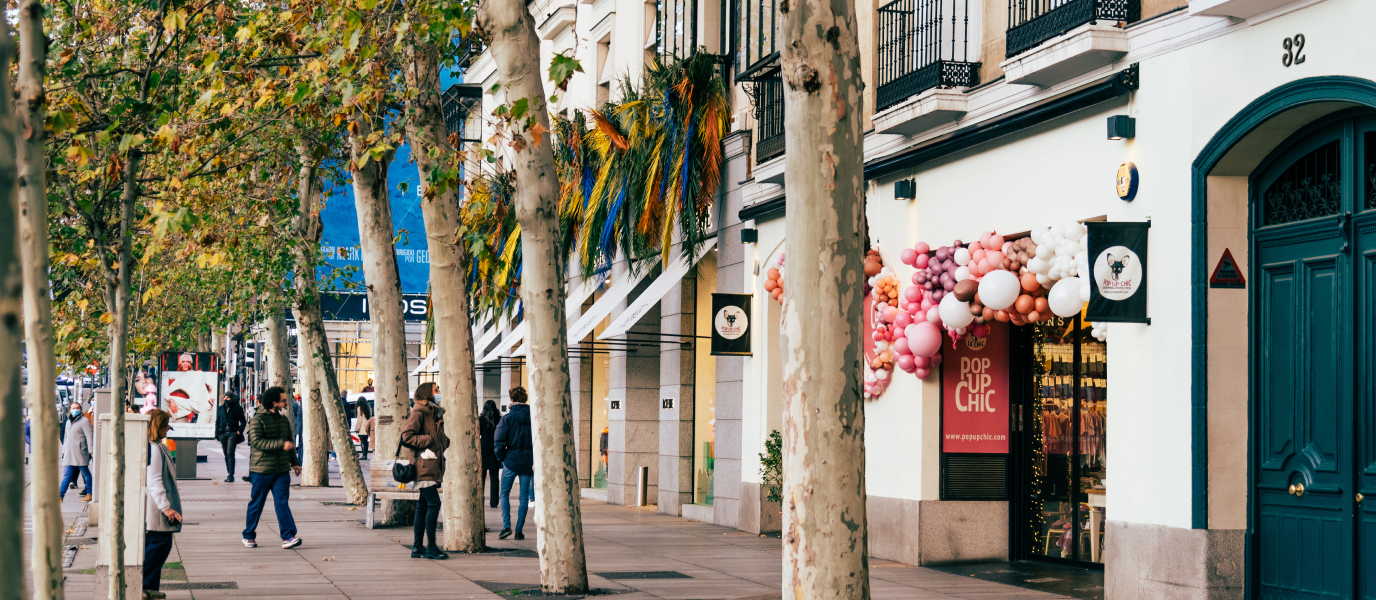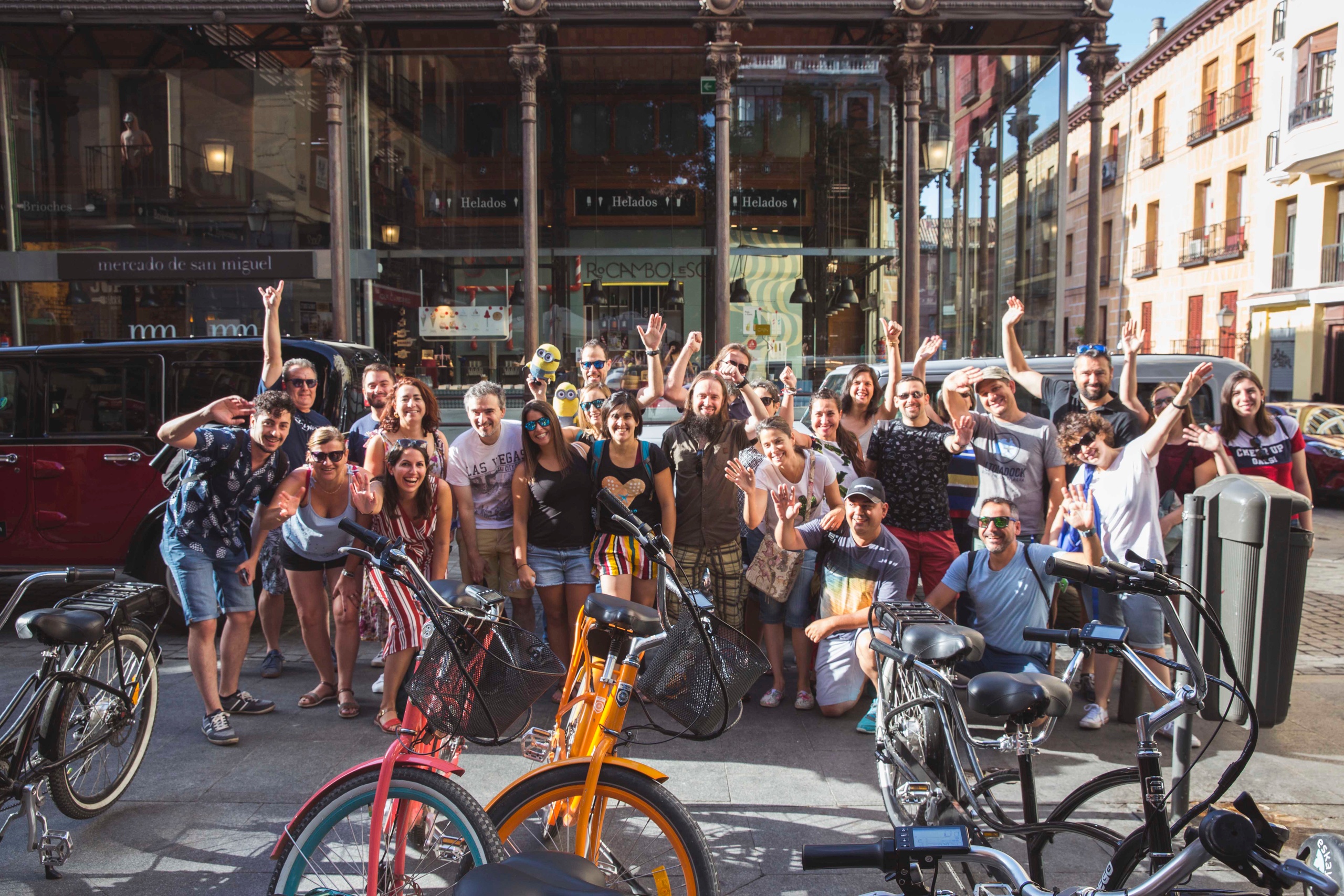For a long time, Madrid had turned its back on its river. Polluted and cut off from the city since the 1970s by the lanes of the M-30 ring road, the Madrilenians had forgotten the natural relationship they once had with the River Manzanares, a tributary of the Jarama that has its source in the Guadarrama mountains and had always been the subject of scorn because it carried so little water—Quevedo in the seventeenth century went so far as to call it a “stream that is an apprentice river”. But all of that is now in the past. That negative perception has been turned around since 2011, the year of inauguration of Madrid Río, a huge linear park that borders the banks of the Manzanares river [río in Spanish, hence the name: Madrid Río] for 7 kilometres. And the park is much more than its gardens, sports grounds and children’s playgrounds that have given this space back to the people; it is also an environmental corridor that has renaturalised the river with the opening of the sluice gates to the reservoir that had been containing the water since 1955, enabling it to recover its geological activity in record time. And as if that were not enough, Madrid Río has brought with it what many Madrilenians had been craving for a long time: a beach on which to relieve the summer heat.
The River Manzanares and its surroundings: the miracle of coming back to life
Hope for the Manzanares sprang again in 2003 when work began on re-laying under ground the stretch of the M-30 ring road that ran alongside the river. This freed up a huge area of land on which the City Council wished to recover the city’s relationship with its river. An international ideas competition was launched that was won by the project led by architect Ginés Garrido, who essentially proposed “building” a landscape with natural elements over the underground tunnels of the M-30.
The result is Madrid Río, a huge area of 1.2m square metres on which 33,623 new trees, 470,844 bushes and 210,898 square metres of grass have been planted. Stretching on both sides of the river between the Puente de los Franceses and the Pasarela de Legazpi, the linear park is bordered on the right bank by the Salón de Pinos, a 6 kilometre green corridor which opens up to a series of gardens. On the left bank, where the city meets the river, the main feature is the large green area of the Arganzuela Park, which is connected to the Matadero de Madrid, a cultural centre housed in the former slaughterhouse. The third great natural area in the park is the one that has restored the historic access over the river which for centuries connected the Royal Palace with the Casa de Campo, a former royal hunting ground and now the city’s biggest public park. Here, on the right bank, the King’s Platform, an enormous esplanade designed as an event venue, has been built to provide access to the Casa de Campo, and the historic Huerta de la Partida fruit orchard, dating back to the sixteenth century, has been restored.
In addition to this new environment that has been created, the opening of the sluice gates to the river’s seven dams in 2015 has led to an unexpected explosion of life both in the water and in the surrounding area. In barely three years the river recovered its banks and its islets, and it is now filled with more than fifty species of birds, hundreds of fishes and more than 2000 autochthonous trees that had not been seen for decades.
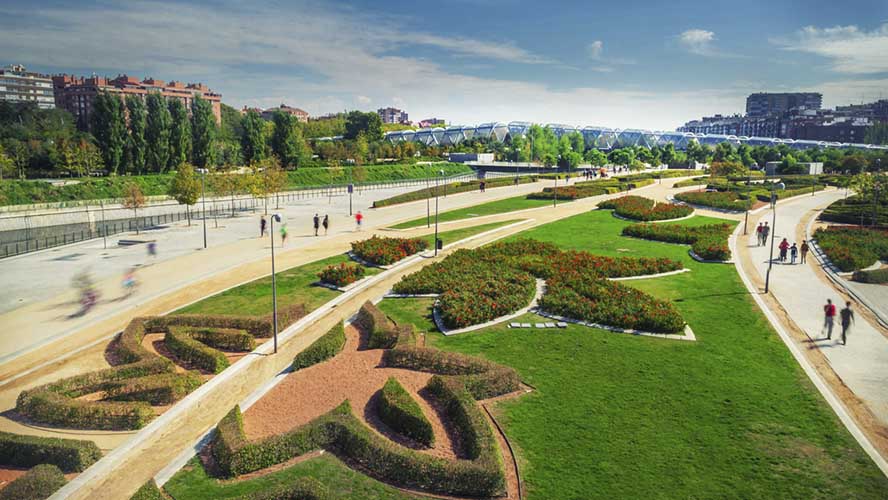
A paradise for sports enthusiasts of all ages
Madrid Río is the perfect place to spend a weekend morning playing sports with the family. Its long promenade is ideal for cycling, skating or simply taking a pleasant stroll along the river. Along the way we will find 17 children’s playgrounds with swings and other equipment for the children to play while the adults take a rest, and other facilities such as bowling pitches, games tables and even 63 drinking water fountains.
In the area of the Arganzuela Park, near the Matadero, there are also numerous sports pitches and courts where you can play football, indoor football, paddle tennis, tennis and basketball. The park also has a skate park and a climbing wall for climbing enthusiasts.
And for those who find Madrid Río is not big enough for them, the park connects with the Senda Real long-distance footpath (path GR 124) which you can walk or cycle along to reach the mountain town of Manzanares el Real.
The Madrid Río beach, a consolation in summer
One of the Madrilenians’ greatest sorrows is not having a beach, but the park has provided some small consolation with an urban beach located in the middle of it, next to the Pasarela de la Arganzuela. Although you cannot swim and there is no sand, the “beach” is comprised of three oval-shaped wading pools with fun vertical fountains for cooling off under. The pools are surrounded by grass where you can spread your towel and sunbathe. In addition, like any beach worth the name in Spain, this one has chiringuitos—beach bars: so you can stop for a bite or a drink at the Terraza La Playa Madrid Río or cross the river to the Madrid Río Café.
Matadero Madrid: culture on the banks of the Manzanares
The Matadero Madrid cultural centre, located at the southern end of Madrid Río, provides a perfect end to our stroll by the river. The Neo-Mudéjar style halls of what used to be the municipal slaughterhouse—closed down in 1996—have been offering a variety of different venues and spaces since 2007, in what is a mini-city devoted to culture. Here we can come and watch live shows at the Naves Matadero International Centre for Performing Arts, documentaries at the Cineteca cinema, or see avant-garde art and design at the other facilities that comprise this complex.
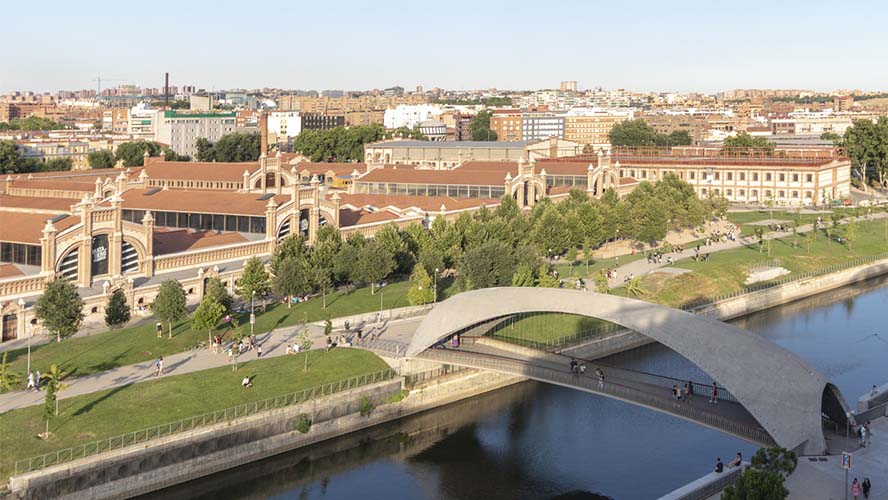
The bridges and vantage points of Madrid Río
The two banks of the river are connected by numerous bridges, some of them historic like the Puente de Segovia, the Puente del Rey and the Puente de Toledo, which coexist alongside modern walkways such as the Puente del Principado de Andorra, which is evocative of the mountain railway bridges of the nineteenth century, or the Puente de Arganzuela, designed by the French architect Dominique Perrault, perhaps the most emblematic bridge of the new Madrid Río, with its metal spiral spanning the Manzanares.
Although the bridges are in themselves excellent vantage points from which to contemplate the historic promontory of Madrid overlooking the Manzanares, which is dominated by the Royal Palace, the view is even better from one or other of the park’s view points, such as the those of the Huerta de la Partida or the Glorieta de San Vicente.
